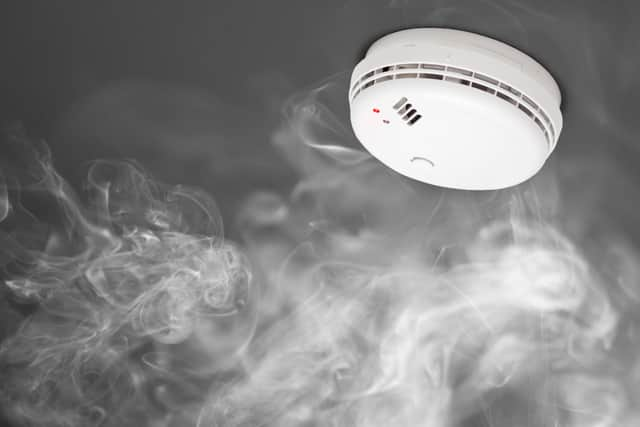Smoke alarm changes in Scotland: How many smoke alarms you need, who’s eligible for free smoke alarms, who can install them - and when the new rules start
and live on Freeview channel 276
It has led to politicians from across Scotland to call for the new legislation to be postponed to give people time to learn about the new rules and make the required changes.
Here is our quick guide to the new fire safety rules in Scotland.
What are interlinked fire alarms?
Advertisement
Hide AdAdvertisement
Hide AdThe element of the new legislation which has left most people scratching their heads regards interlinked fire alarms.


The new legislation means that homes should have interlinked systems, meaning that if one alarm goes off, they all go off.
The reason for the change is that, at the moment, if you are in another part of the house to the alarm that has been set off by a fire, you might miss it. An interlinked system means that all the alarms go off and you’ll be alerted no matter what room you are in.
What do I need to do?
If you are a homeowner, it is up to you to make sure your home follows the new rules.
Advertisement
Hide AdAdvertisement
Hide AdYou must have one smoke alarm in the room where you spend most of your day; one smoke alarm in every circulation space on each storey, such as hallways and landings; and one heat alarm in the kitchen.
All smoke and heat alarms should be mounted on the ceiling and be interlinked. Check the manufacturers guidance on each alarm for instructions on where the alarm should be placed.
If you have a carbon-fuelled appliance, like a boiler, fire, heater or flue you must also have a carbon monoxide detector. This does not need to be linked to the fire alarms. Gas cookers and hobs do not need a carbon monoxide detector.
Caravans and garages (unless used as a living space) are not included in the new rules.
Here’s an example
Advertisement
Hide AdAdvertisement
Hide AdLet’s say you live in a two-storey, three-bedroom house. According to the new rules, you’ll need a smoke alarm on the first-floor landing, one in the downstairs hall, and one in the living room (assuming that’s where you spend most of your time). You’ll need one linked heat alarm in kitchen and, if you have a carbon-fuelled appliance, a carbon monoxide detector in that room.
Let’s say you also have a one-bed flat with an open-plan living room and kitchen, and no hallway. You’ll need need just one heat alarm in this room - as well as a carbon monoxide alarm where required.
What if I rent?
Private landlords should already have interlinked fire alarm systems in their properties. If your rented property doesn’t have one, contact your landlord. If they don’t comply you can get a tribunal.
Social landlords are carrying out a programme of work to make sure interlinked fire alarms are in place. Speak to your landlord if you are waiting for interlinked fire alarms to be installed.
Will it affect my insurance?
Advertisement
Hide AdAdvertisement
Hide AdYou’ll need to check the terms and conditions on your home insurance policy.
How do I find someone to install them?
You can find a list of approved traders on the Scottish Trading Standards website.
When do the new rules start?
The changes have to be made by February 2022.
Comment Guidelines
National World encourages reader discussion on our stories. User feedback, insights and back-and-forth exchanges add a rich layer of context to reporting. Please review our Community Guidelines before commenting.
